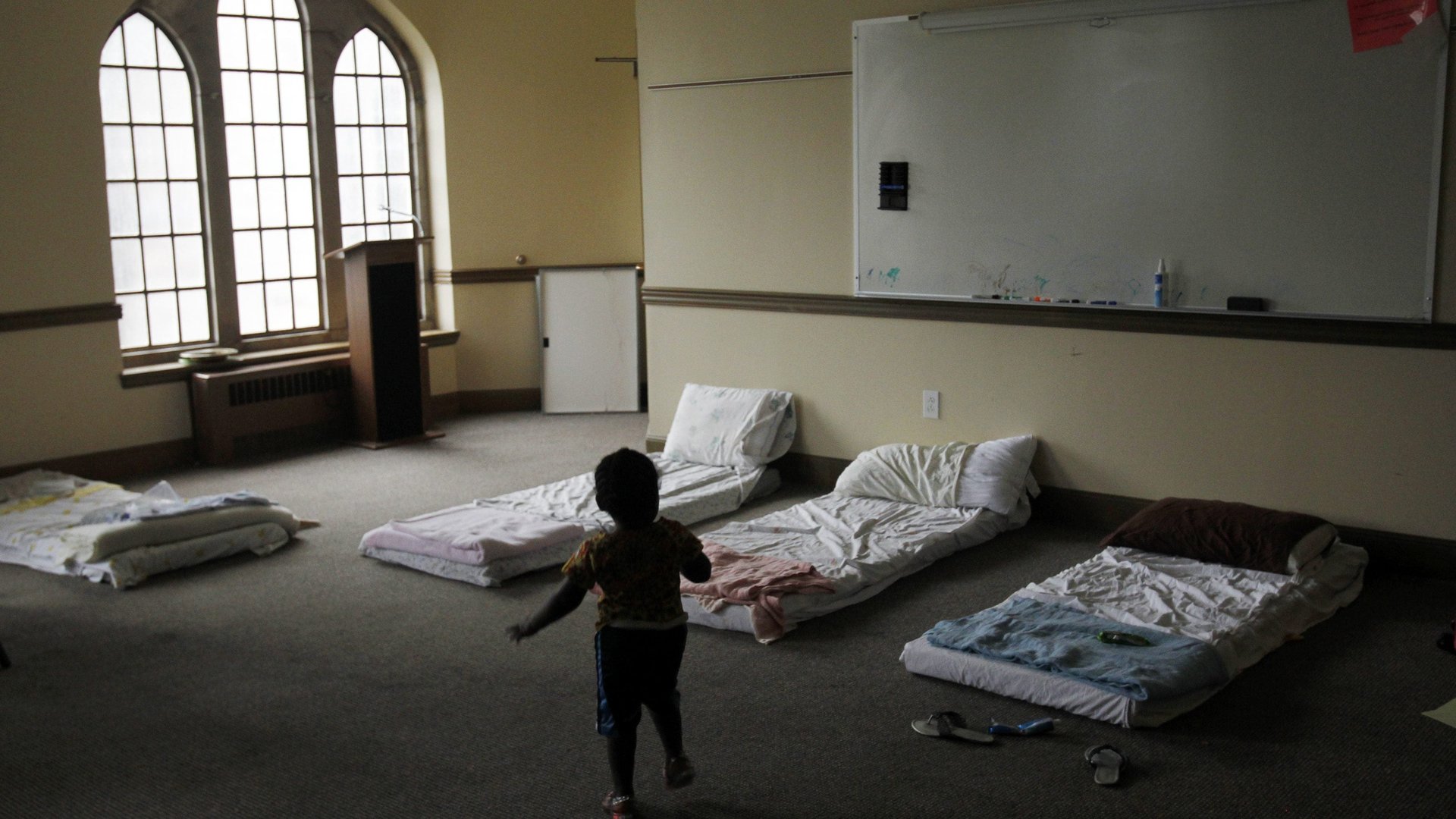US homelessness declined in 2021
Fewer Americans were in homeless shelters at the start of 2021 than at any time since at least 2007, according to early estimates from US Department of Housing and Urban Development (HUD). Roughly 326,000 people without a permanent residence were considered “sheltered” homeless in temporary housing such as emergency shelters HUD reported on Feb. 4 (pdf).


Fewer Americans were in homeless shelters at the start of 2021 than at any time since at least 2007, according to early estimates from US Department of Housing and Urban Development (HUD). Roughly 326,000 people without a permanent residence were considered “sheltered” homeless in temporary housing such as emergency shelters HUD reported on Feb. 4 (pdf).
Homelessness in the US has been trending down for more than a decade—20% fewer people were unhoused in the US last year compared to 2010—but last year saw the sharpest decline in the last decade. That’s an 8% decrease from the year prior.
HUD attributes much of this decrease to emergency measures rolled out by state and local governments in the early days of the pandemic to slow the spread of Covid-19. Eviction moratoriums and emergency housing programs funded with federal money from the CARES Act allowed governments to house tens of thousands of people who would otherwise be without shelter.
The data support the idea, pushed by homelessness advocates and researchers for years, that a primary solution to homelessness is ensuring people have affordable access to stable, safe homes. Lessons from the pandemic may inform policies that reduce persistent homelessness for more than half a million Americans.
How America counts its homeless population
Every year, on a single night in January, shelter workers around the country receiving HUD funding tally the number of beds available and the number of people staying in them. This “point-in-time” count, allows HUD to track the number of people experiencing “sheltered” homelessness. A similar point-in-time count is usually conducted at least every other year for people experiencing unsheltered homelessness living outside exposed to the elements. HUD removed this requirement in 2021 because of the pandemic, but more than 200 communities opted to conduct an unsheltered count.
That was critical to confirming the reduction in sheltered homelessness was real, not merely a reflection of people moving from shelters to the streets. The number of unsheltered homeless people remained steady compared to 2020, according to HUD. “We can’t be absolutely certain, but we do have a lot of data points that suggest we didn’t see an offsetting increase in unsheltered homelessness,” said a HUD spokesperson on a call with journalists on Feb. 4.
Shelter from the pandemic
In April of 2020, San Francisco was one of the first US cities to pay for hotel rooms to house homeless people. California governor Gavin Newsom then launched a statewide program called Project Roomkey that went on to serve more than 10,000 people. Communities around the country from Indianapolis to Philadelphia used federal funding through the CARES Act passed in March of 2020 in response to the pandemic to roll out similar programs.
Eviction moratoriums also kept some people, especially families, from falling into homelessness in the first place. From March 2020 through the fall of 2021, states and cities, and eventually the Centers for Disease Control issued broad bans on eviction that allowed renters who had lost income due to the pandemic to remain in their homes. Research by Princeton University’s Eviction Lab estimates that this network of local and national policies prevented at least 1.6 million evictions in 2020. Researchers found that state and local moratoriums directly impacted how many evictions were filed once federal protections ended in August of 2021.
HUD credits stabilizing policies like eviction moratoriums, extended unemployment insurance, and one-off cash payments with reducing the number of homeless families in particular—this number went down 15% from 2020.
Now nearly two years on, some of those programs are coming to an end while others are being made permanent as cities and states purchase hotels to convert them into supportive housing.
But US cities now have funding and mandate to invest in homelessness services. The 2021 American Rescue Plan delivered $350 billion in federal funding to state and local governments for pandemic recovery. The first reports of how cities are spending this money are just coming in, and among 152 large cities and counties across the country, at least $648 million is being dedicated to homelessness efforts. The first impacts of these programs will be seen in results from the 2022 point-in-time count, which was conducted in late January will be released in 2023.